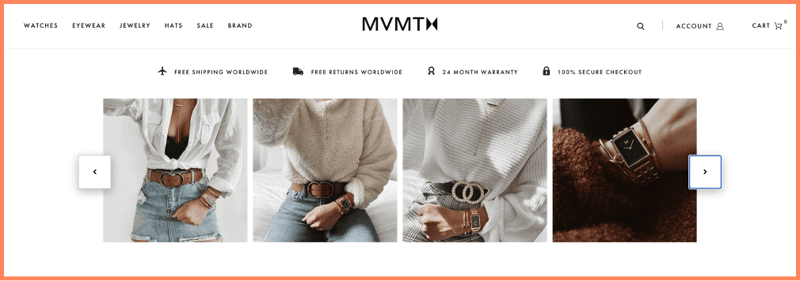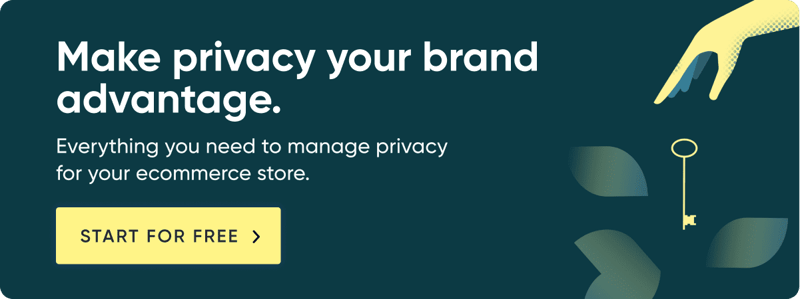Why You Need Customer Consent for User-Generated Content (UGC)

Table of Contents
What is user-generated content (UGC)?
User-generated content, or UGC for short, is compelling marketing material like high-quality customer photos, videos, reviews, or testimonials. UGC content helps grow brand awareness, trust, promotes authenticity and drives purchase decisions.
Examples of user-generated content that brands use include:
- Sharing customer photos on your social media accounts
- Consumer photo galleries on your product pages or website
- Using written testimonials on your website or in content
MVMT via Website
Do you need permission before sharing user-generated content?
The short answer is yes. Just because your customer buys something from you, and shares it online publicly, doesn’t mean your brand has the right to take that image and use it wherever you please.
Before you share customer content on your website, email marketing, social media or even in an ad campaign, it's essential to respect your customers' privacy by getting creator consent in advance.
Here are two additional reasons why it’s so important:
1. It’s a legal requirement
Digital Rights Management (DRM) is a copyright protection for digital content, including videos, photos, music, and any printed material created by a person. Meaning if your business wants to use material that a consumer-created on social media platforms (Facebook, Twitter, Instagram, etc.), it's your legal responsibility to get their permission.
2. It could tarnish customer relationships
Trust is hard to build yet easy to lose and sharing consumer content without permission risks that customer relationship.
Running a reputable eCommerce business is all about building trust with your customers—especially if you're in the early stages. A whopping 92% of consumers trust recommendations from people they know, and 70% trust online customer opinions, which is why leveraging UGC is so effective in boosting sales.
Back in 2015, Shereen Way posted an Instagram photo of her daughter wearing pink Crocs sandals. The brand then decided to share this image on Crocs' website, and Way wasn't aware of this action until a reporter contacted her on Instagram. Yikes. Not only did they fail to get consent before using the image, but it was also of a child under 13, which is against the Children's Online Privacy Protection Act.
The good news is that getting consent doesn’t need to be complicated—there are three simple ways you can obtain customer consent for UGC in a way that will maintain your positive and trustworthy brand image.
Let’s dive in.
Best practices for using UGC in your marketing strategy
1. Ask permission directly in social media comments
The advantages of this method are twofold. Firstly, it’s a direct form of communication that is most likely to get a response from the user. Secondly, it helps build your public presence and showcase your personable and trustworthy brand image. When commenting on posts, ensure explicit confirmation from the user that you have permission to share their content.
If you've used customer content in the past without permission, I would consider deleting that content to avoid any future problems. Laws like CCPA became effective to give consumers more control over how their data is used.
The example below by Coach demonstrates an easy and transparent methodology. They've created a unique hashtag, #YesCoach, for easy customer approval and they’ve included a link to their Terms and Conditions page for more details.
@paigeharris.co via Instagram
The hashtag method has additional benefits like creating a curated library of images on Instagram for your brand to tap into later.
Lastly, by engaging positively on your customers' social media posts, you're turning them into brand champions who will be motivated to continue sharing and supporting your brand in the future. A win-win situation for everyone.
2. Remember to credit the creator
When sharing user-generated content on different marketing channels, try to credit the original creator and link back to them whenever possible. This might look like including their social media handle in your Instagram caption, tagging them directly in the post or linking to their website or original content like a YouTube video.
Dynamite Clothing via Instagram
If you're sharing across different social media platforms, it's always a good idea to ask the creator how they would like to be credited. For example, ask the creator if they would like their personal or business page tagged.
Remember that you're using their content for your brands' gain, like increased revenue, so a tag or credit is a way of giving back to your customer, like free exposure (if that matters to them). Crediting also motivates other customers to share and tag your brand for a chance to be featured.
3. Outline use of UGC in policies
You can stay legally compliant by outlining your UGC policy in your privacy policy or your terms and conditions page outlining how you handle customers’ personal information they share with your brand.
Function of Beauty, who sells personalized hair care products has a dedicated section for UGC in their privacy policy page that clearly outlines how they use customer information that’s been submitted to their website, mainly via product reviews.
It’s a great example of how a brand can remain transparent with their customers, by clearly communicating what they can expect and how their information might be used. You can add your own UGC section to your privacy policy using Enzuzo.

Function of Beauty via Privacy Policy
Final thoughts
It may seem like a hassle to reach out to each and every content creator, but when you consider the legal implications and brand image repercussions, it’s well worth the effort.
In three easy steps, you can apply these best practices to your content curation and marketing strategy, ensuring you are respecting your customers' privacy while growing your eCommerce business with integrity.
Megan Smith

